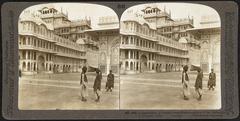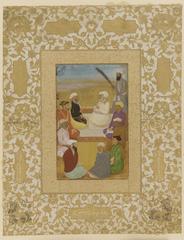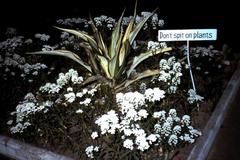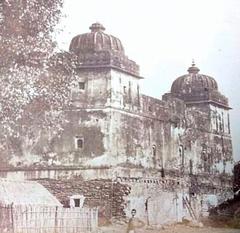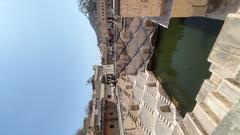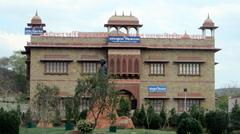Amber Fort Visiting Hours, Tickets, and Complete Guide to Jaipur’s Historical Marvel
Date: 14/06/2025
Introduction: Amber Fort and Its Significance in Jaipur
Perched atop the rugged Aravalli hills, Amber Fort (also known as Amer Fort) is a crown jewel of Rajasthan’s royal heritage and a must-visit for anyone exploring Jaipur’s historical sites. Constructed in 1592 by Raja Man Singh I, a trusted general of Mughal Emperor Akbar, the fort blends Rajput and Mughal architectural traditions in an expansive complex of courtyards, palaces, temples, and gardens (TripSavvy; EAA). Since its designation as a UNESCO World Heritage Site in 2013, Amber Fort has become integral to Jaipur’s identity, hosting cultural events, supporting local artisans, and inviting travelers from across the globe (Travel with CG; Jaipur Tourism).
This guide delves into Amber Fort’s origins, architectural splendor, visitor information (hours, tickets, accessibility), and the vibrant cultural life that thrives within its storied walls. Whether you’re a history buff, architecture enthusiast, or cultural explorer, use this resource to plan a seamless and enriching visit to one of Jaipur’s most celebrated landmarks (Lonely Planet; Crazy Hodophile).
Contents
- Origins and Historical Evolution
- Architectural Style and Layout
- Key Attractions and Artistic Highlights
- Defensive Features and Engineering
- Cultural and Socio-Economic Impact
- Visiting Hours, Ticket Prices, and Access
- How to Reach Amber Fort
- Best Time to Visit
- Practical Tips and Accessibility
- Nearby Attractions
- Cultural Events and Experiences
- Frequently Asked Questions (FAQ)
- Conclusion and Recommendations
Origins and Historical Evolution
Amber Fort’s history dates back to the late 16th century, initiated by Raja Man Singh I in 1592 (TripSavvy; EAA). The area’s roots stretch further, with the town of Amer founded by the Meenas in the 10th century and remnants of earlier fortifications beneath the current structure (Travel with CG). Expanded over 150 years by successive rulers, Amber Fort remained the seat of the Kachwaha Rajputs until the capital shifted to Jaipur in 1727. Its strategic hilltop location, overlooking Maota Lake, was pivotal for defense and water supply (IJFMR).
Architectural Style and Layout
Amber Fort is an architectural masterpiece, blending Rajput and Mughal influences in its use of red sandstone and white marble (Rajasthan Best Places; IJFMR). The layout features four main courtyards, each with distinct functions, connected by imposing gateways and corridors:
- Jaleb Chowk: Main entrance via Suraj Pol (Sun Gate), historically the assembly point for troops.
- Ganesh Pol and Diwan-i-Aam: Ganesh Pol, a richly decorated ceremonial gateway, leads to the Diwan-i-Aam (Hall of Public Audience), where the Maharaja heard petitions (History Tools).
- Sheesh Mahal and Sukh Niwas: The Hall of Mirrors (Sheesh Mahal) dazzles with intricate mirror mosaics, while Sukh Niwas (Hall of Pleasure) features ingenious water-cooling channels for relief during Rajasthan’s hot summers (Rajasthan Tour Planner).
- Zenana (Women’s Quarters): Interconnected chambers for royal women, ensuring privacy and security.
Defensive ramparts, watchtowers, and hidden escape tunnels underscore the fort’s military significance (EAA).
Key Attractions and Artistic Highlights
- Sheesh Mahal (Mirror Palace): Famed for thousands of tiny mirror tiles that create a sparkling effect with minimal light.
- Sukh Niwas: Ingenious design channels cool air over water features for natural air-conditioning.
- Ganesh Pol: Rich frescoes, lattice windows, and marble inlay work exemplify Mughal-Rajput artistic fusion.
- Shila Devi Temple: Dedicated to the goddess Kali; the idol was installed after Raja Man Singh I’s Bengal victory (TripSavvy).
- Jali Screens and Frescoes: Lattice screens allow royal women to observe without being seen; walls feature scenes from Hindu mythology (Mumbai7).
- Maota Lake: Scenic water body at the fort’s base, once the main water source and a defensive feature.
Defensive Features and Engineering
Amber Fort’s design prioritized both grandeur and security:
- Thick Fortification Walls: Built with red sandstone and lime mortar for durability (IJFMR).
- Watchtowers and Bastions: For surveillance and defense.
- Secret Tunnels: Escape routes connect Amber Fort to nearby Jaigarh Fort, used during sieges (EAA).
- Floating Gardens: Ingenious gardens on Maota Lake reflect Rajput engineering prowess.
Cultural and Socio-Economic Impact
Amber Fort catalyzed Jaipur’s urban development, spurring growth in trade, crafts, and markets around its base (IJFMR). Today, it sustains local artisans, guides, and vendors, and serves as a venue for major cultural events like the Jaipur Literature Festival (Rajasthan Best Places). Restoration projects not only conserve heritage but also generate local employment (Jaipur Tourism).
Visiting Hours, Ticket Prices, and Access
Amber Fort Visiting Hours
- Open Daily: 8:00 AM – 5:30 PM
- Night Tourism: 6:30 PM – 9:15 PM (select areas; check in advance)
- Light and Sound Show: English at 7:30 PM; Hindi at 8:30 PM (The Humble World)
Ticket Prices (as of June 2025)
- Indian Nationals: ₹100; Students ₹10 (with ID)
- Foreign Nationals: ₹550; Students ₹100 (with ID)
- Children Under 15: Free
- Light and Sound Show: ₹295 (English), ₹195 (Hindi)
- Special Experiences: Elephant ride ₹1,200/two persons (morning only; subject to ethical review); Hot air balloon from ₹9,000/person (Crazy Hodophile; Ease India Trip)
Note: Fees may change; check official sources before your visit.
Where to Buy Tickets
- Onsite: At the fort entrance ticket counter.
- Online: Official tourism websites and authorized portals.
How to Reach Amber Fort
- Distance: ~11 km (7 miles) from Jaipur city center.
- By Taxi/Auto-rickshaw: 20–30 minutes depending on traffic.
- By Bus: Regular connections from the city center to Amber village.
- From Airport: 1.5 hours by car/cab (The Humble World).
- Golden Triangle Tours: Common stop on Delhi–Agra–Jaipur itineraries (Lonely Planet).
Parking: Available at the base; be mindful of steep roads.
Best Time to Visit and Seasonal Tips
- October–March: Pleasant weather, ideal for exploring and photography (Japji Travel).
- April–July: Extremely hot; visit early morning if necessary.
- Monsoon (June–September): Lush surroundings but possibility of rain (Lonely Planet).
- Early Morning/Late Afternoon: Beat the crowds and heat; elephant rides available only in mornings.
Practical Tips and Accessibility
- Footwear: Wear sturdy shoes; expect lots of walking and stairs (The Humble World).
- Water & Sun Protection: Carry a bottle, hat, sunglasses, and sunscreen.
- Accessibility: Fort has steep stairs and uneven paths; limited accessibility for wheelchairs. Electric carts and palanquins may assist some visitors (Lonely Planet).
- Photography: Allowed in most areas; ask about restrictions.
- Guided Tours: Hire local guides at the entrance for insights; audio guides also available (Japji Travel).
- Dining: The 1135AD restaurant offers a royal-themed experience inside the fort; local cafés and Amber village nearby for other options.
Nearby Attractions
- Jaigarh Fort: Connected to Amber Fort by a secret passage; known for the world’s largest cannon.
- Nahargarh Fort: Offers panoramic sunset views of Jaipur.
- Panna Meena ka Kund: Historic stepwell with stunning symmetry.
- Anokhi Museum of Hand Printing: Showcases regional textile arts (Lonely Planet).
- Amber Village: Explore ancient temples, havelis, and artisan shops.
Cultural Events and Experiences
- Jaipur Literature Festival: Asia’s largest literary event, hosted annually in the fort’s courtyards (Rajasthan Best Places).
- Light and Sound Show: Nightly retelling of Amber Fort’s history in Hindi and English (Jaipur Tourism).
- Gallery Artchill: Contemporary art exhibitions in the fort’s west wing (Gallery Artchill).
- Traditional Markets: Discover Rajasthani textiles, jewelry, and crafts in nearby bazaars (Rajasthan Tours India).
- Heritage Water Walks: Guided tours highlight the palace’s ingenious water systems (Jaipur Thru My Lens).
Frequently Asked Questions (FAQ)
Q: What are Amber Fort’s visiting hours?
A: Daily from 8:00 AM to 5:30 PM; night tourism from 6:30 PM to 9:15 PM (select areas).
Q: How much are Amber Fort tickets?
A: Indian adults ₹100, foreign adults ₹550, students (with ID) discounted; children under 15 free.
Q: Are guided tours available?
A: Yes, local guides and audio guides are available at the entrance.
Q: Is Amber Fort wheelchair accessible?
A: Accessibility is limited due to stairs and uneven surfaces; electric carts and palanquins assist some visitors.
Q: Are elephant rides available?
A: Yes (morning only), but ethical concerns are prompting reviews; consider animal welfare before participating.
Q: Can I photograph inside Amber Fort?
A: Yes, but check for restrictions in certain halls.
Q: How do I reach Amber Fort?
A: About 11 km from Jaipur city center; accessible by taxi, auto-rickshaw, or bus.
Visual Highlights
The grand Ganesh Pol entrance at Amber Fort.
Dazzling mirror mosaics of Sheesh Mahal.
Internal Links to Related Guides
Conclusion and Visitor Recommendations
Amber Fort stands as a living testament to Rajasthan’s regal history, blending military ingenuity, artistic brilliance, and vibrant cultural traditions. Its strategic hilltop location, stunning Sheesh Mahal, and immersive festivals make it a highlight of any Jaipur itinerary. Practical details on visiting hours, ticket prices, and accessibility empower travelers to explore responsibly and comfortably. Ongoing restoration and community engagement ensure Amber Fort’s legacy for future generations.
For seamless planning, download the Audiala app for tickets, tours, and cultural updates. Explore nearby forts, artisan markets, and Jaipur’s rich heritage corridors for a complete Rajasthan experience.
References and Further Reading
- TripSavvy: Amber Fort Jaipur Guide
- Crazy Hodophile: Amber Fort Visiting Hours, Tickets, and Guide
- Rajasthan Best Places: Amber Fort Jaipur Complete Guide
- Rajasthan Tour Planner: Why Amber Fort is Famous
- EAA: Amber Fort Jaipur Visitor Guide
- Travel with CG: Visiting the Amer Fort
- Jaipur Tourism Official Website
- Lonely Planet: Guide to Amber Fort Rajasthan

